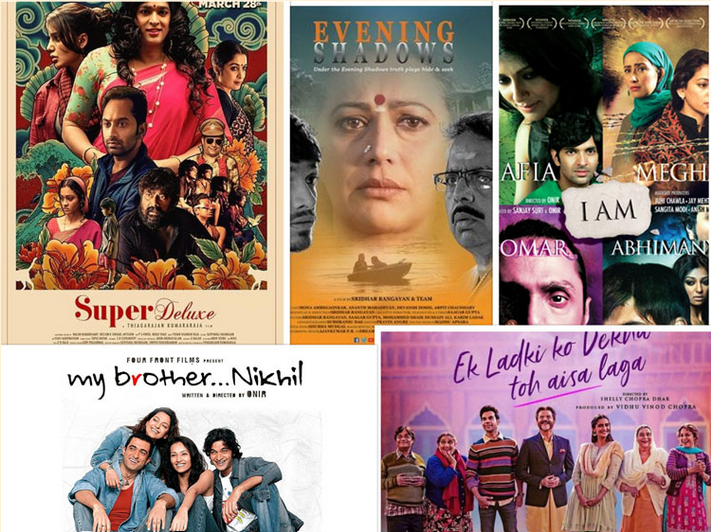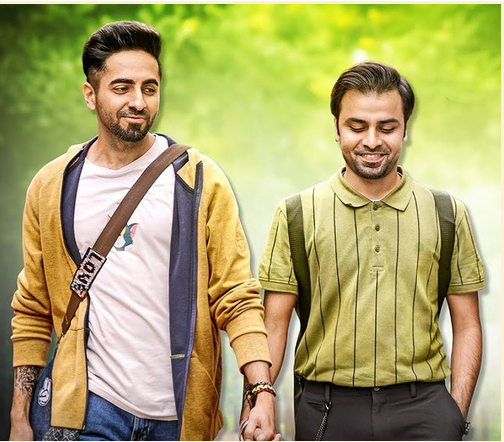INTRODUCTION-
We live in the 21st century wherein everyone is entitled to the same sets of rights and liberty as anyone else. This includes representation in media and elsewhere for all. Is everyone treated the same though? With the recent traction gained by the LGBT community, light has also been bought on the deprivation of rights they faced. With the scraping down of Article 377 in 2018 and with the ongoing legislation of legalizing same-sex marriage, the debate about their adequate representation in media has also stemmed in the mainstream. From famous hashtags on Twitter to discussions in peer circles, non-cishet relationships are not a personal matter anymore.
To truly judge the level of empowerment of a particular sect of a society, one often looks at their representation at various political, social, economic, and cultural levels. Our entertainment industry which continues to inspire us through blockbusters hasn’t been behind either. Cinema can be wielded as a tool of change for society and representation in media is extremely significant. However, there have been a lot of challenges for the LGBT community in this paradigm.
LGBTQIA+ BASED FILMS IN INDIA-
When Bollywood rose to glory and fame in the early 80s and 90s, there was great hype around it. Bollywood, back then was not just a source of conventional entertainment but also produced meaningful films such as ‘Khel Kursi Ka’ during the Emergency of 1975 to call out the government. Against the backdrop of its rising fame, the film industry had characters revolving around transgendered and non-cishet roles as well.
However, Bollywood merely depicts the reality of the society. Society, fundamentally biased against the LGBT community, looked down upon them. Similarly, movies and literature around transgendered or non-cishet communities depicted them in funny or negative roles. They were usually associated with behavioral patterns which often come across as stereotypes held by the common folks. They were barely shown as a constructive force in the movies, let alone occupying lead roles. Better roles and higher pay rates continued to be granted to ‘straight’ actors in the industry.
With the dawn of the 21st century, globalizing forces have made the world a global village. With the rise in technology and literacy, there is greater political consciousness and awakening. There has been a rising trend for those advocating for the rights of the LGBT community. Their situation drastically improved over time but are still far from achieving equality and gender justice for them. The recent screening of movies like, ‘Shubh Mangal Zyada Savdhaan’, ‘Badhai Do’, ‘Chandigarh Kare Aashiqui’, etc. has been acknowledged by Indian audiences even if not fully accepted. Movies continue to use their representation in media to provide comic relief in between main scenes.
Not just this, but the rise of OTT platforms has also revolutionized the entertainment industry. The depiction of non-cishet relationships in contemporary web series has started to normalize the idea of ‘on-screen romance’ between the same sexes. These web series and movies streaming on OTT platforms and in our cinemas have broken the glass ceiling into breaking stereotypes about the LGBT community. While there may be certain issues around it as we discuss later, there is no doubt that these movies have defined the idea of romance and romantic relationships in a completely different way.
STRAIGHT FOLKS IN NON-CISHET ROLES?
While movies such as ‘Shubh Mangal Zyada Savdhaan’ have been appreciated in the mainstream, critics argue about the ‘actual representation’ of the LGBT community through such films. The movie casts two straight actors, Ayushmaan Khurana and Jitendra Kumar in gay roles. This comes off as extremely bizarre considering the whole movie is propounded on principles of adequate representation in media. Similarly, the famous blockbuster ‘Badhaai Do’, a 2022 film, casts straight actors like Rajkumar Rao.
The major problem with these movies is that while they continue to be the flag-bearers for granting recognition to the community, they fail in doing so. With the casting of straight actors in such movies, where is “their representation”? This implies that there continues to be a bias and inclination toward conventional sexes. This not only leads to discrimination but also discourages people from the community to come out of the closet. Thus, it fosters an environment of promoting straight actors in the industry naturally. This way, the LGBT community stays deprived of their due recognition leading to assimilation within heterosexual identities. With the ongoing Pride month, we need to evaluate how far have we come in providing space to our marginalized communities.
-BHAWINI SRIVASTAVA

